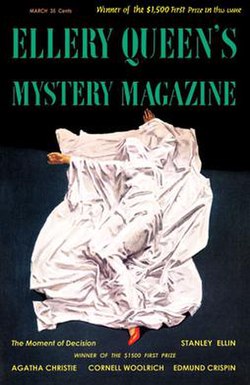
Crime fiction, detective story, murder mystery, mystery novel, and police novel are terms used to describe narratives that centre on criminal acts and especially on the investigation, either by an amateur or a professional detective, of a crime, often a murder. It is usually distinguished from mainstream fiction and other genres such as historical fiction or science fiction, but the boundaries are indistinct. Crime fiction has multiple subgenres, including detective fiction, courtroom drama, hard-boiled fiction, and legal thrillers. Most crime drama focuses on crime investigation and does not feature the courtroom. Suspense and mystery are key elements that are nearly ubiquitous to the genre.

Ellery Queen is a pseudonym created in 1928 by the American detective fiction writers Frederic Dannay (1905–1982) and Manfred Bennington Lee (1905–1971). It is also the name of their main fictional detective, a mystery writer in New York City who helps his police inspector father solve baffling murder mysteries. Dannay and Lee wrote most of the novels and short story collections in which Ellery Queen appears as a character, and these books were among the most popular American mysteries published between 1929 and 1971. Under the pseudonym Ellery Queen, they also edited more than thirty anthologies of crime fiction and true crime. Dannay founded, and for many years edited, the crime fiction magazine Ellery Queen's Mystery Magazine, which has been published continuously from 1941 to the present. From 1961 onwards, Dannay and Lee commissioned other authors to write thrillers using the pseudonym Ellery Queen, but not featuring Ellery Queen as a character; some such novels were juvenile and were credited to Ellery Queen Jr. They also wrote four mysteries under the pseudonym Barnaby Ross, which featured the detective Drury Lane. Several movies, radio shows, and television shows were based on their works.

Mystery is a fiction genre where the nature of an event, usually a murder or other crime, remains mysterious until the end of the story. Often within a closed circle of suspects, each suspect is usually provided with a credible motive and a reasonable opportunity for committing the crime. The central character is often a detective, who eventually solves the mystery by logical deduction from facts presented to the reader. Some mystery books are non-fiction. Mystery fiction can be detective stories in which the emphasis is on the puzzle or suspense element and its logical solution such as a whodunit. Mystery fiction can be contrasted with hardboiled detective stories, which focus on action and gritty realism.

Black Mask was a pulp magazine first published in April 1920 by the journalist H. L. Mencken and the drama critic George Jean Nathan. It is most well-known today for launching the hardboiled crime subgenre of mystery fiction, publishing now-classic works by Dashiell Hammett, Raymond Chandler, Erle Stanley Gardner, Cornell Woolrich, Paul Cain, Carroll John Daly, and others.
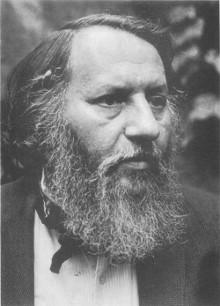
Avram Davidson was an American writer of fantasy fiction, science fiction, and crime fiction, as well as the author of many stories that do not fit into a genre niche. He won a Hugo Award and three World Fantasy Awards in the science fiction and fantasy genre, a World Fantasy Life Achievement award, and an Ellery Queen's Mystery Magazine short story award and an Edgar Award in the mystery genre. Davidson edited The Magazine of Fantasy and Science Fiction from 1962 to 1964. His last novel The Boss in the Wall: A Treatise on the House Devil was completed by Grania Davis and was a Nebula Award finalist in 1998. The Encyclopedia of Science Fiction says "he is perhaps sf's most explicitly literary author".
Clayton Rawson was an American mystery writer, editor, and amateur magician. His four novels frequently invoke his great knowledge of stage magic and feature as their fictional detective The Great Merlini, a professional magician who runs a shop selling magic supplies. He also wrote four short stories in 1940 about a stage magician named Don Diavolo, who appears as a minor character in one of the novels featuring The Great Merlini. "Don Diavolo is a magician who perfects his tricks in a Greenwich Village basement where he is frequently visited by the harried Inspector Church of Homicide, either to arrest the Don for an impossible crime or to ask him to solve it."
Edward Dentinger Hoch was an American writer of detective fiction. Although he wrote several novels, he was primarily known for his vast output of over 950 short stories.

Mary Christianna Lewis, known professionally as Christianna Brand, was a British crime writer and children's author born in British Malaya.
Otto Penzler is an American editor of mystery fiction, and proprietor of The Mysterious Bookshop in New York City.
Stanley Bernard Ellin was an American mystery writer. Ellin was born in Brooklyn, New York. After a brief tenure in the Army, at the insistence of his wife, Ellin began writing full time. While his novels are acclaimed, he is best known for his short stories. In May 1948, his first sale, and one of Ellin's most famous short stories, "The Specialty of the House", appeared in Ellery Queen's Mystery Magazine.
Joseph Commings was an American writer of locked room mysteries. He wrote a series of soft-core sex novels, but is best known for his locked-room mystery/impossible crime short stories featuring Senator Brooks U. Banner."
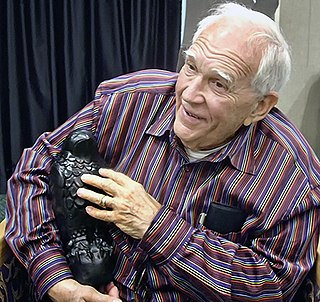
Joseph Nicholas Gores was an American mystery writer. He was known best for his novels and short stories set in San Francisco and featuring the fictional "Dan Kearney and Associates" private investigation firm specializing in repossessing cars, a thinly veiled escalation of his own experiences as a confidential sleuth and repo man. Gores was also recognized for his novels Hammett, Spade & Archer and his Edgar Award-winning or -nominated works, such as A Time of Predators, 32 Cadillacs and Come Morning.

S. J. Rozan is an American architect and writer of detective fiction and thrillers, based in New York City. She also co-writes a paranormal thriller series under the pseudonym Sam Cabot with Carlos Dews.
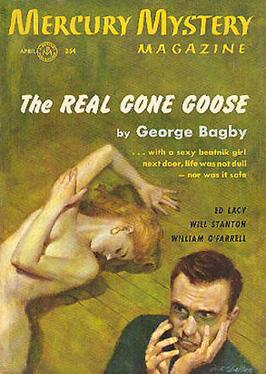
Mercury Publications was a magazine publishing company,initially owned and operated by Lawrence E. Spivak, which mainly published genre fiction in digest-sized formats. The focus of Spivak's line was on detective and mystery stories and novels, but it also included magazines about humor, fantasy, and true crime. The offices were located at 570 Lexington Avenue in New York, NY and in later years in Cornwall, Connecticut.
Dave Zeltserman is an American novelist, born in Boston, Massachusetts on 23 May 1959. He has published noir, mystery, thriller, and horror novels, including Small Crimes and Pariah. He won both the Shamus and Derringer awards for his novelette Julius Katz in 2010. He also writes Morris Brick serial killer thrillers under the pseudonym Jacob Stone. His novel Small Crimes was made into a Netflix Original film starring Nikolaj Coster-Waldau.
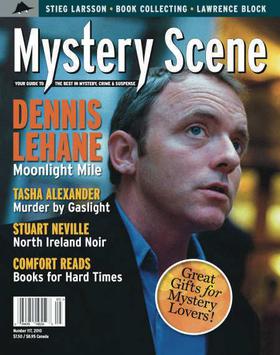
Mystery Scene is an American magazine, first published in 1985, that covers the crime and mystery genre with a mix of articles, profiles, criticism, and extensive reviews of books, films, TV, short stories, audiobooks, and reference works.
The President of the United States, Detective is a science fiction/mystery short story by H. F. Heard. It was originally published in Ellery Queen's Mystery Magazine in March 1947, and subsequently republished in Ellery Queen's Mystery Magazine in April 1969 and February 1991, in the 1949 anthology The Queen's Awards, and in the 1975 anthology Ellery Queen's The Golden 13; as well, an extended version, named "The Thaw Plan", was published in Heard's 1948 collection The Lost Cavern and Other Stories of the Fantastic.

Paul D. Marks was an American novelist and short story writer. His novel White Heat, a mystery-thriller set during the Rodney King riots of 1992, won the first Shamus Award for Independent Private Eye Novel from the Private Eye Writers of America.

Pulp Literature Press is a Canadian-based small press founded in Richmond, BC in 2013. The primary work of the press is the publication of the quarterly literary journal, Pulp Literature. In 2016, the press expanded into publishing writing guides, and added full-length novels in 2017.

Helen Holly Roth-Franta was an American writer who authored novels and short stories in the genres of spy fiction and detective fiction. She also published works under the pseudonyms P.J. Merrill and K.G. Ballard. Roth published twelve novels in her lifetime and many short stories, one of which was nominated for an Edgar Award.
